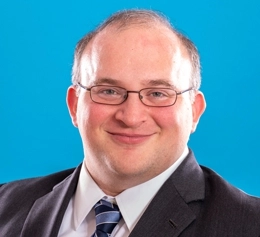Yesterday afternoon, the Federal CircuitSee CAFC overturned the Eastern District of Texas’s test for venue. Even after TC Heartland, patent trolls were trying to keep defendants in the Eastern District of Texas. And in the first order issued by Judge Gilstrap, in a case called Raytheon v. Cray, it seemed like he was going to cooperate.
In Cray’s request to overturn Judge Gilstrap’s decision, the Federal CircuitSee CAFC ruled that Judge Gilstrap had abused his discretion in refusing to transfer the lawsuit out of the Eastern District. The Federal CircuitSee CAFC then established three key factors in analyzing the “regular and established place of business.” Their factors are based on the text of the patent venue statute, 28 U.S.C. § 1400, and the history of its development, a history that establishes that it was intended to restrict the availability of venue in patent cases.
The upshot? Having a website generally accessible in a district or a telecommuting employee isn’t enough to create venue. And that stems directly from the text of the statute – a district where “the defendant has … a regular and established place of business”.
Who?
We start at the beginning. The patent venue statute requires that “the defendant has” something. The Federal CircuitSee CAFC makes clear this means “a place of the defendant, not solely a place of the defendant’s employee.”
In other words, the defendant itself has to establish the location. Cray, in contrast, had a remote employee who worked out of his own home of his own volition. No products were stored there and there was no Cray presence in his home. That’s not enough, according to the Federal CircuitSee CAFC.
Companies with teleworkers can rest easy—allowing your employees flexibility in where they live and work won’t force you to face lawsuits in places your company doesn’t operate.
When?
The Federal CircuitSee CAFC also addressed the temporal aspect of the statute—that the place be “regular and established.” Sporadic activity isn’t enough, nor is a transient place within the district. Entering the district for “some special work or particular transaction” like an individual job, or a trade show, wouldn’t qualify; you need a permanent location.
What?
This is one of the key points in the Federal Circuit’s decision. Focusing on the word “place of business,” the Federal CircuitSee CAFC determined that Judge Gilstrap had “erred as a matter of law in holding that ‘a fixed physical location in the district is not a prerequisite to proper venue.’” In other words, you must have a fixed physical location in the district, used to carry out your business, in order to establish the “place of business” required by the statute. Virtual spaces or electronic communications are insufficient.
The short version? If you have a website, you aren’t suddenly going to wind up in the Eastern District of Texas for it. If you email people in Tyler, Texas, that isn’t enough either. You need to have some kind of physical location in the district.
A “Regular and Established Place Of Business” For The Modern World
The Federal CircuitSee CAFC may have looked at the historical development of the statute, and cases from the middle of the 20th century, in developing their test. But the test they developed is actually forward-thinking; it’s a venue test that reflects the realities of modern business in a way that allows those businesses to take advantage of modern technology without worrying about being forced to take a trip to Tyler.

